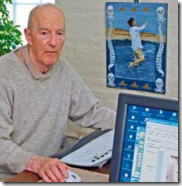The article about Pediatric Associates in CA has a nugget with a potentially outsized impact: the implication that VFC vaccines…
Monday Morning Update 12/15/08
At least 1,200 California physicians have been waiting since June to be paid for Medicare claims. The problems stem from a switch to a new Medicare claims contractor on top of new ID requirements. Physicians report being owed hundreds of thousands of dollars, forcing many to work without a paycheck and take out loans and second mortgages on their homes. A Oakland dermatology practice is owed $450,000. “You’re witnessing a slow death here, except the death is no longer slow.”
FQHC RiverStone Health (Montana) is going live on eClinicalWorks EMR/PM solution. RiverStone will also providing hosting for three other Montana FQHCs.
The WSJ blog interviews a relatively calm Jonathan Bush of athenahealth (check out the video of the actual interview). Bush comments on Obama’s plans to digitize healthcare. Oh, and manages to get a plug in for athenahealth’s (and others) hosted system model, claiming it’s superior to the “broken” approach of developing/selling traditional software to run healthcare.
Dayton, OH is already feeling the pressure of too few primary care physicians, with experts estimating another 200 more providers are needed to meet current demand. A physician with Premier Health Partners is promoting the idea of developing a medical home project to provide some relief. To develop the model would require up to $20 million in capital and a shift in the way primary care is funded, since additional monthly premiums would be needed to supplement traditional reimbursement.
A survey by the National Center for Health Statistics finds that only 38% of physicians are using full or partial EMR systems. Only 4% of the 2,000 physician respondents report that their EMRs are fully functioning. Compare that to a Commonwealth Fund study this summer that found 98% of doctors in the Netherlands and 89% in the UK physicians use EMRs.
The Obama economic stimulus package seems likely to include some electronic medical records line item, but does that really help stimulate the economy? A university professor says EMRs are a good idea, but of no macroeconomic benefit.
The Detroit Institute for Children signs a five-year renewal agreement with CareTech Solutions to provide outsourcing services. CareTech has been providing it with full IT services for the last three years.
Practice Fusion signs up a couple of new clients in Chicago and Seattle. The company’s product is called Free Electronic Medical Records and they claim it can be deployed in “days or less with no cost.” What’s the catch, right?
Physician Pauline Chen’s New York Times editorial bemoans the declining number of primary care doctors just as Obama’s health plan will probably prescribe better access. “Mr. Obama and his team may find ways to give more Americans access to the waiting room, but what if there’s no doctor on the other side of the door? The crisis in primary care must be addressed before any real change can occur; otherwise, the flood of new patients may instead turn out to be a final strike for our ailing health care system.”
A massage parlor operating in a medical office building and offering to accept workers compensation insurance is raided in Lake City,WA, following a police crackdown on Craigslist advertisers.
I suppose it is fitting that I came across this post just as we begin our launch of HIStalkPractice. Who knew that Dr. Lawrence L. Weed is credited with being the brainchild behind the first computerized electronic medical records? In the 1960s, Weed’s initial concept formed the basis for the PROMIS project at the University of Vermont, and in 1970 the Medical Center Hospital of Vermont used the system for the first time. Around the same time, The Mayo Clinic began working on its own version.
Stevens Hospital (WA) is taking advantage of relaxed Stark law provisions and subsidizing the purchase of GE Healthcare’s Centricity EMR for four Seattle-area physician practices.
A Houston physician launches the second boutique medical practice in Sugar Land, TX.
Newseek covers online second opinions, concluding that it’s a small but growing trend, the logistics are cumbersome for patients, and they nearly always must pay the full cost out of pocket.
If you are a physician and iPhone user, check out pMDsoft’s new charge capture software that allows providers to track patients, write sign-off notes while rounding, and enter billing information. It’s available on the iPhone App Store.
Medical Present Value signs up six new physician groups and will be helping them to better monitor payor compliance and verify reimbursement at the line item level.
During my days working in the vendor world, this is the kind of stuff we hated messing with. Consulting firm EHR Group is offering a free document called “7 Costly Mistakes Made When Purchasing Electronic Medical Records and Health IT – And How to Avoid Them.” I’m sure the report includes some great tips on how to select the right EMR, get the right price, and negotiate a favorable contract. Just the kind of stuff vendors hate messing with. Not because they are trying to take advantage of you, but because every time a prospect asks to make a change to the standard deal, paperwork has to be re-done and terms have to be approved (and, of course those sales types just want to close the deal and never have to talk to you again, right?) Anyway, if you are shopping for health IT goodies, I’m guessing this white paper may be worth a read.
Here’s some proof that while many things change in healthcare, some things seem to stay the same. A local Utah paper highlights the career of Dr. Norman Fawson, a physician who recently retired after 40 years of practice. He claims that when he started, a visit cost $3 – or perhaps a few eggs or a chicken if the patient didn’t have cash. He also states that the two things he didn’t like about being a physician were “the computer and government intrusion into health care.”



